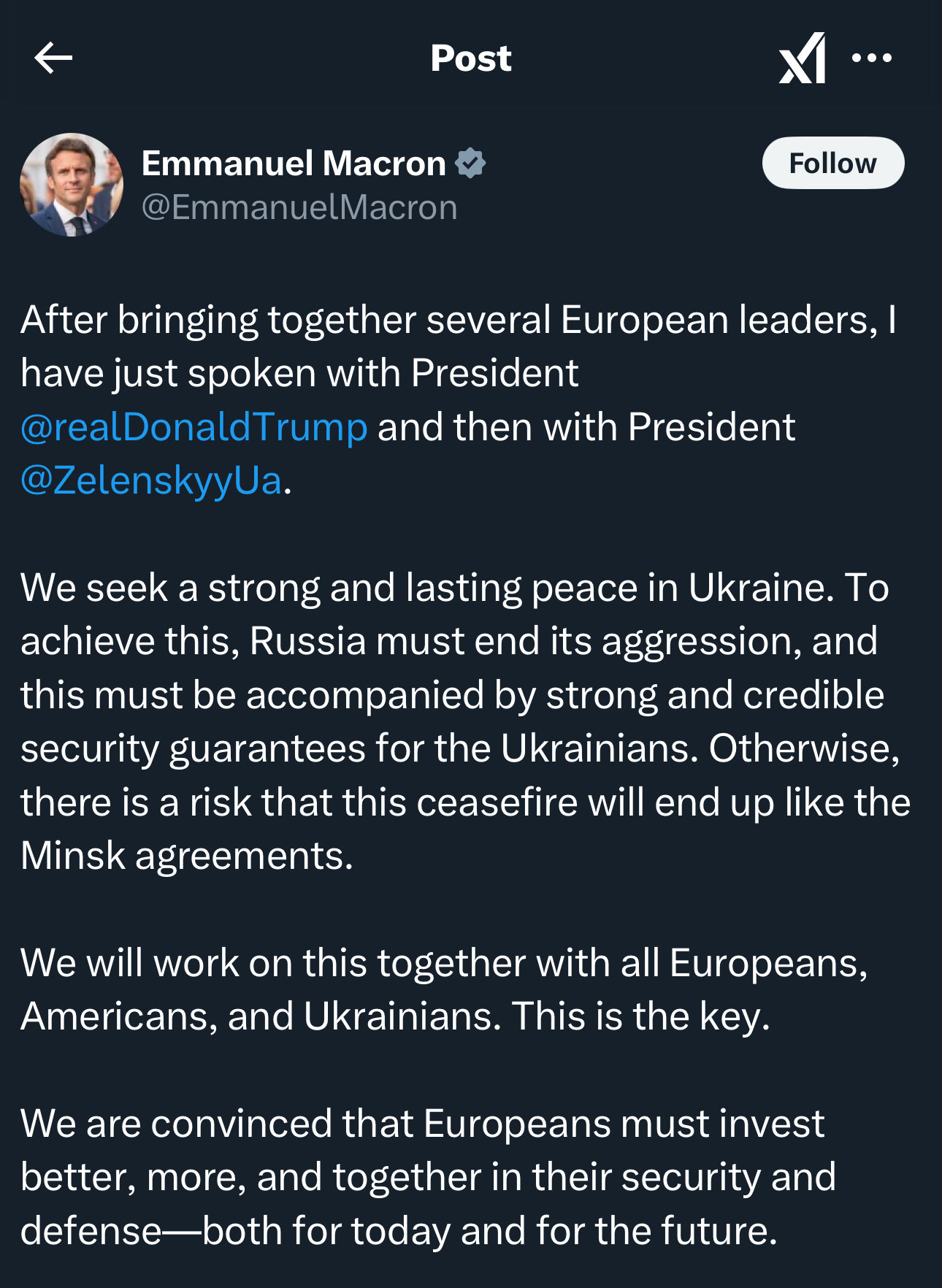Ukraine War Peace Talks: U.S. Sidelines Europe in Negotiations with Russia
As the war in Ukraine continues, new tensions arise over U.S.-led peace efforts excluding European allies.
Peace talks between Russia and the United States have begun in Saudi Arabia, aiming to end the ongoing war in Ukraine, which has displaced millions of people and triggered Europe’s largest refugee crisis since World War II.
However, tensions have risen over the United States' decision to exclude European Union (EU) nations, including Ukraine, from the negotiations. This comes as Russia launched drone attacks on Ukraine just hours before the talks began, targeting the country’s defenses and energy infrastructure.
While Secretary of State Marco Rubio has denied that the U.S. is sidelining foreign powers, the controversy underscores ongoing geopolitical rifts in the Russia-Ukraine war.
The War in Ukraine: A Brief Recap
Russia’s 2022 invasion of Ukraine marked a major escalation in the ongoing Russia-Ukraine war. Tensions had simmered for decades following the collapse of the Soviet Union and Ukraine’s independence in 1991. In 2014, Russia occupied and annexed Crimea—a Ukrainian peninsula with a predominantly Russian population—igniting the conflict.
Violence erupted in Ukraine’s Donbas region when Russian-backed forces seized government buildings and declared the establishment of the self-proclaimed Donetsk People’s Republic (DPR) and Luhansk People’s Republic (LPR). Multiple ceasefire attempts under the Minsk Agreements in 2014 and 2015 failed to resolve the conflict. In 2017, the United States expanded its support for Ukraine by approving arms sales, moving beyond the nonlethal military aid it had previously provided.
On Feb. 21, 2022, Russia officially recognized the DPR and LPR as independent states. Under orders from Russian President Vladimir Putin, Russian forces entered the region for what the Kremlin called “peacekeeping duties.” The next day, Putin declared that the Minsk Agreements “do not exist” and blamed Ukraine for their collapse.
In response, then-President Joe Biden imposed sanctions on Russia, calling the move a violation of Ukraine’s sovereignty.
“We've cut off Russia's government from Western financing,” Biden said in a report by the BBC.
Two days later, Russia launched a full-scale invasion of Ukraine, calling it a “special military operation.” Thousands of Russian troops entered Ukraine from the north, northeast, and east, escalating the war.
As of 2025, Russia occupies approximately 20% of Ukraine, with fighting ongoing. According to United Nations estimates, more than 14 million people in the region require humanitarian aid, while 6 million have fled to neighboring countries and nearly 4 million are internally displaced. In total, about one-third of Ukraine’s population has been forced to flee, including half of all Ukrainian children.
Despite the ongoing conflict, many Ukrainians have chosen to remain.
“Despite the challenges, despite everything they are going through, they all want to stay in their area, in their villages. They don't want to leave,” said Kenan Madi, chief of field operations at the UN office in Ukraine.
As of now, more than 28,000 civilian casualties have been recorded, including at least 10,000 deaths, though actual figures are believed to be higher.
The Push for Peace Talks
The peace talks come after President Donald Trump pushed for a deal by organizing a meeting with Russian President Vladimir Putin in Riyadh, the capital of Saudi Arabia, to end the decade-long conflict in Ukraine.
Trump previously held a phone call with Putin last week, underscoring his urgency to end the three-year invasion and signaling a further shift in the U.S. stance on Ukraine. The shift follows comments from Defense Secretary Pete Hegseth, who previously called the likelihood of Ukraine restoring its pre-2014 borders “unrealistic,” according to a report by The New York Times.
“As we’ve already seen with President Trump and this administration, things that maybe normally would take six months, a year, or two years are taking a matter of weeks,” said State Department spokesperson Tammy Bruce in The Wall Street Journal.
Both countries initially downplayed the outcome of the first meeting. Bruce told reporters Monday that the meeting in Riyadh was meant to “determine if the Russians perhaps are serious, and if they’re on the same page.”
That same day, Russian press secretary Dmitry Peskov said the meeting was intended to discuss restoring relations with Ukraine and “will be dedicated to possible negotiations on a Ukrainian resolution and organizing a meeting between the two presidents.”
The American delegation in Saudi Arabia included Secretary of State Marco Rubio, Middle East Special Envoy Steve Witkoff, and National Security Adviser Michael Waltz. The Russian delegation included Foreign Minister Sergey Lavrov, Foreign Policy Adviser Yuri Ushakov, and Sovereign Wealth Fund Head Kirill Dmitriev.
Upon the arrival of the Russian diplomats in Riyadh, Elon Musk, head of the Department of Government Efficiency (DOGE), celebrated in a post on X, referring to the Russian delegation as “competent.”
“This is what competent leadership looks like,” Musk wrote.

During the meeting, State Department spokesperson Tammy Bruce said in a statement that U.S. diplomats had established “a consultation mechanism to address irritants to our bilateral relationship with the objective of taking steps necessary to normalize the operation of our respective diplomatic missions.”
“President Trump wants to stop the killing. The United States wants peace and is using its strength in the world to bring countries together. President Trump is the only leader in the world who can get Ukraine and Russia to agree to that,” the statement said.
The two countries also agreed to appoint “high-level” teams to work toward ending the war in a way that is “enduring, sustainable, and acceptable” to both Russia and Ukraine.
“Just a practical reality is that there is going to be some discussion of territory, and there’s going to be discussion of security guarantees,” Waltz said in an interview with Reuters.
However, after the meeting Tuesday in Riyadh, controversy arose as Ukraine and members of the European Union were excluded from the talks. The meeting marked the first such discussions between Russian and U.S. officials since the invasion began in 2022.
Europe’s Reaction and Rising Tensions
European leaders reacted immediately to Ukraine’s exclusion from the initial meeting, with Ukrainian President Volodymyr Zelenskyy stating that he would not recognize any deal made without his country’s involvement.
“No decisions about Ukraine without Ukraine … Europe must have a seat at the table when decisions about Europe are being made,” Zelenskyy told Al Jazeera.
French President Emmanuel Macron responded in a post on X, saying he had spoken with both Trump and Zelenskyy and called for continued support for Ukraine.
“We seek a strong and lasting peace in Ukraine. To achieve this, Russia must end its aggression, and this must be accompanied by strong and credible security guarantees for the Ukrainians. Otherwise, there is a risk that this cease-fire will end up like the Minsk agreements,” Macron wrote.
“We will work on this together with all Europeans, Americans, and Ukrainians. This is the key.”
France, along with the United Kingdom, Germany, Italy, Poland, and Spain, previously released a joint statement affirming their support for Ukraine, stating in a report by The Guardian that they remained committed to Ukraine’s “independence, sovereignty, and territorial integrity.”
“Our shared objectives should be to put Ukraine in a position of strength. Ukraine and Europe must be part of any negotiations. Ukraine should be provided with strong security guarantees,” the statement said.
European Union foreign policy chief and former Estonian President Kaja Kallas echoed this sentiment in a post on X, emphasizing that Ukraine’s independence is “unconditional.”
“Our priority must now be strengthening Ukraine and providing robust security guarantees. In any negotiation, Europe must have a central role,” Kallas wrote.
Several European leaders suggested increasing military support for Ukraine, with Polish Prime Minister Donald Tusk emphasizing the need for Europe to bolster its own defenses.
“The time has come for a much greater ability of Europe to defend itself,” Tusk said in a report by Time.
“There is unanimity here on the issue of increasing spending on defense. This is an absolute necessity.”
Poland has spent more than 4% of its gross domestic product (GDP) on defense—more than any other member of the North Atlantic Treaty Organization (NATO), a military alliance of 32 countries.
President Donald Trump responded to the backlash Tuesday, blaming Ukraine for the war and claiming that Zelenskyy could have reached a deal to prevent it.
“You never should have started it,” Trump told NBC News.
“I think I have the power to end this war, and I think it’s going very well. But today I heard, ‘Oh, well, we weren’t invited.’ Well, you’ve been there for three years.”
Trump also questioned Zelenskyy’s popularity, noting that the Ukrainian president has a 4% approval rating since taking office in 2019. Ukraine has been under martial law since the Russian invasion began in 2022.
“I am the president of Ukraine because 73% of people voted for me,” Zelenskyy responded in The Independent.
“And today, I’m president because the majority in my country support me. I’m a patriot, just like the people defending our country.”
Zelenskyy has planned to hold a press conference following Trump’s comments.
Following the U.S.-Russia meeting, the EU announced Wednesday that it would impose new sanctions on Russia in response to the peace talks, further escalating tensions.
As negotiations unfold, the response from Ukraine, European allies, and global leaders will shape the next phase of the war and its potential resolution.






